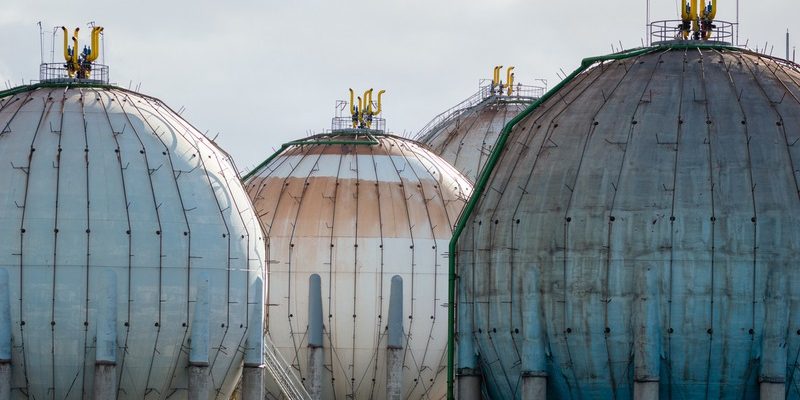With global energy demands on the rise, efficient and sustainable energy resources have never been more critical. Liquefied Natural Gas (LNG) stands at the forefront of this shift, offering a cleaner alternative to traditional fossil fuels. In this landscape, innovations are continuously emerging to enhance the efficiency of LNG processes from extraction to delivery. Understanding these developments is essential for grasping the future of energy.
Advancements in LNG Transportation
The journey of LNG from wellheads to consumers encapsulates a complex transportation process. Historically, the shipment of LNG required massive, specialized tankers with hefty operating costs. Today, advancements in shipping technologies have brought impressive gains in efficiency and cost-effectiveness.
-
Use of lightweight composite materials for tanker construction, reducing overall vessel weight and increasing cargo capacity.
-
Implementation of advanced insulation techniques to minimize boil-off gas during transport, ensuring more product reaches the destination.
-
Design enhancements such as twin-hull structures and propulsion efficiency, enabling tankers to travel longer distances without refueling.
Developments in LNG Processing
The processing of natural gas into LNG is an energy-intensive procedure, where even small improvements can yield significant overall benefits. Innovators have introduced several techniques to optimize this conversion process.
Cryogenic Technology Enhancements
A critical aspect of LNG processing is the cooling and condensation of natural gas. New cryogenic methods have been significant:
-
Implementation of mixed-refrigerant processes which allow for more precise temperature control and operational flexibility.
-
Advances in heat exchanger design, improving the thermal efficiency of the liquefaction cycle.
Website technologies often feature details on the latest equipment and facilities that embrace these advanced methods, helping industry insiders stay abreast of emerging trends that could further optimize their operations.
Modularization of LNG Plants
Modularity in LNG plant construction has introduced a shift in how facilities are built and expanded. This approach allows for:
-
Less on-site construction time, leading to quicker project turnarounds.
-
Scalability, as additional modules can be added as demand increases without overhauling the existing infrastructure.
-
Improved reliability and easier maintenance, since modules can be individually serviced or replaced as needed.
Improving Energy Efficiency Through Technology
An ongoing challenge within the LNG industry is to maximize energy efficiency throughout the supply chain. Innovations in technology play a leading role in addressing this issue.
Waste Heat Recovery Systems
By employing advanced waste heat recovery systems, LNG facilities can convert excess heat into energy, which can be used to power equipment or the liquefaction process itself, significantly reducing the overall energy consumption.
Digitalization and Automation
Digital tools and automated systems have revolutionized how LNG facilities are monitored and controlled. Smart sensors, data analytics, and control algorithms can optimize LNG production and predict maintenance needs, preventing costly downtimes and improving overall plant efficiency. International solvent suppliers leverage similar digital innovations to provide clients with precise formulations and to improve their supply chain logistics, which can be beneficial for businesses operating in the LNG sector.
Environmental Impact Reduction
As the world strives for greener energy sources and practices, the environmental impact of LNG operations remains a key concern.
Reducing Methane Emissions
Mitigation of methane leakage during LNG production and transport is critical. Innovations such as advanced monitoring systems, high-integrity pressure protection systems (HIPPS), and predictive maintenance can substantially reduce methane emissions.
Integrating Renewable Energy Sources
Incorporating renewable energy into LNG operations can lower the carbon footprint. Solar and wind energy can power auxiliary systems within LNG plants, or even supplement the primary power supply, resulting in cleaner and more sustainable production.
Strides in Safety Enhancements
Amidst these technological strides, ensuring the safety of LNG operations is paramount. Innovations in safety protocols, emergency response systems, and worker training programs have significantly decreased risk factors associated with LNG production and transport.
Future Considerations
Exploring the potential of LNG goes beyond improving current systems. Cutting-edge research into solid-state LNG and the use of LNG as a maritime fuel promises a new horizon for the industry.
Adoption of Solid-State LNG
Advancements in solid-state storage could revolutionize the way LNG is transported and used, potentially offering safer and more space-efficient solutions.
LNG as a Cleaner Maritime Fuel
With environmental regulations tightening, the maritime industry is turning towards LNG as a cleaner-burning alternative to traditional bunker fuel, setting the stage for a surge in LNG demand.
Enhancing Refrigerant Quality
The efficiency and environmental impact of LNG can also be influenced by the quality of refrigerants used in the liquefaction process. Using high-quality refrigerants ensures the optimal operation of cooling systems, leading to improved energy consumption rates and reduced environmental harm. Focusing on quality hydrocarbon refrigerants is one way the industry is pushing for better performance and sustainability.
Wrapping Up
In light of the challenges posed by our energy and environmental needs, the industry continues to innovate, making LNG a compelling proposition in the global energy mix. From advancements in transporting and processing natural gas to efforts aimed at environmental conservation and safety, the continuous evolution in this sector reflects a drive towards a more efficient, reliable, and responsible use of our energy resources.




